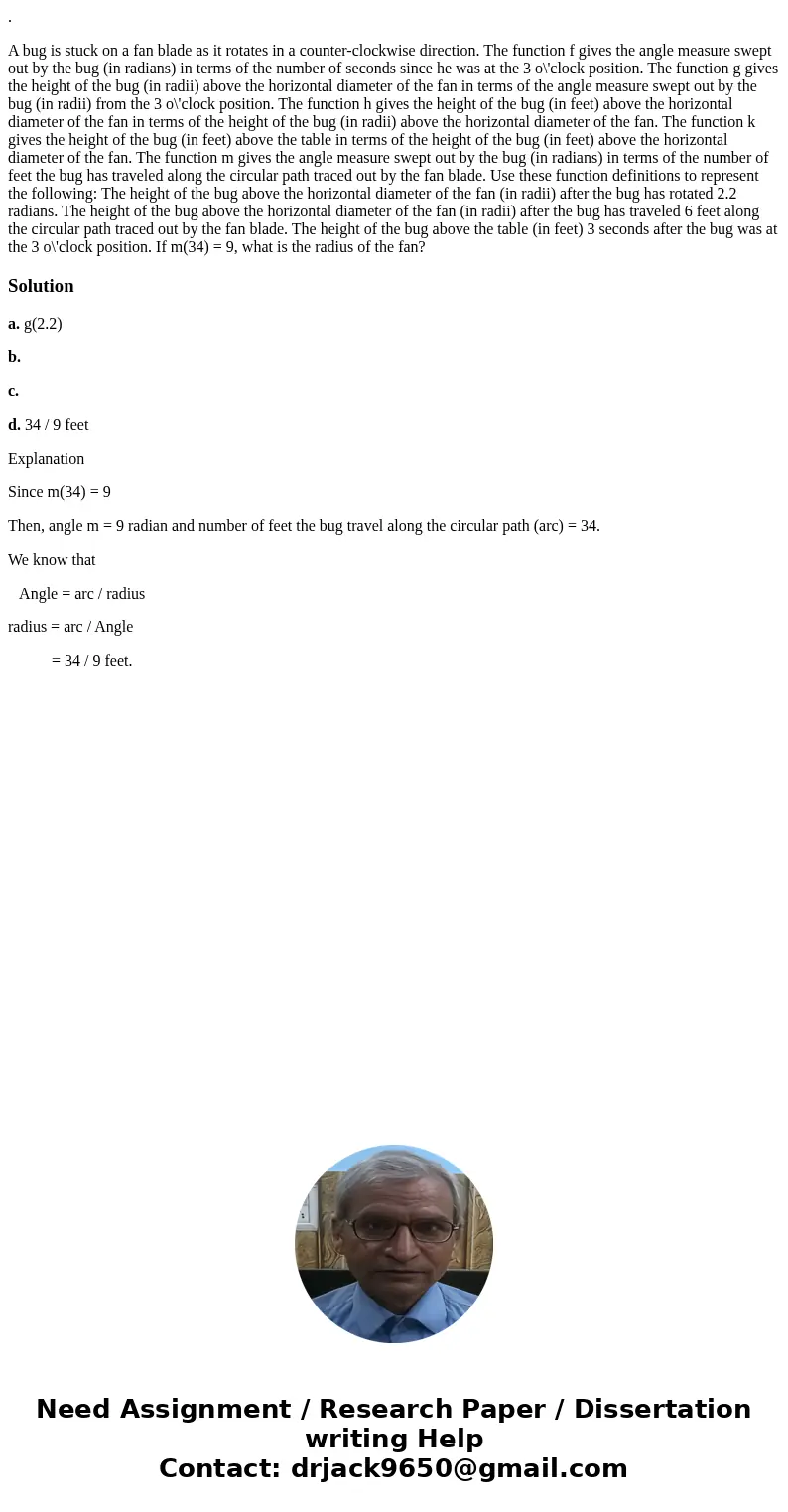A bug is stuck on a fan blade as it rotates in a counterclo
.
A bug is stuck on a fan blade as it rotates in a counter-clockwise direction. The function f gives the angle measure swept out by the bug (in radians) in terms of the number of seconds since he was at the 3 o\'clock position. The function g gives the height of the bug (in radii) above the horizontal diameter of the fan in terms of the angle measure swept out by the bug (in radii) from the 3 o\'clock position. The function h gives the height of the bug (in feet) above the horizontal diameter of the fan in terms of the height of the bug (in radii) above the horizontal diameter of the fan. The function k gives the height of the bug (in feet) above the table in terms of the height of the bug (in feet) above the horizontal diameter of the fan. The function m gives the angle measure swept out by the bug (in radians) in terms of the number of feet the bug has traveled along the circular path traced out by the fan blade. Use these function definitions to represent the following: The height of the bug above the horizontal diameter of the fan (in radii) after the bug has rotated 2.2 radians. The height of the bug above the horizontal diameter of the fan (in radii) after the bug has traveled 6 feet along the circular path traced out by the fan blade. The height of the bug above the table (in feet) 3 seconds after the bug was at the 3 o\'clock position. If m(34) = 9, what is the radius of the fan?Solution
a. g(2.2)
b.
c.
d. 34 / 9 feet
Explanation
Since m(34) = 9
Then, angle m = 9 radian and number of feet the bug travel along the circular path (arc) = 34.
We know that
Angle = arc / radius
radius = arc / Angle
= 34 / 9 feet.

 Homework Sourse
Homework Sourse